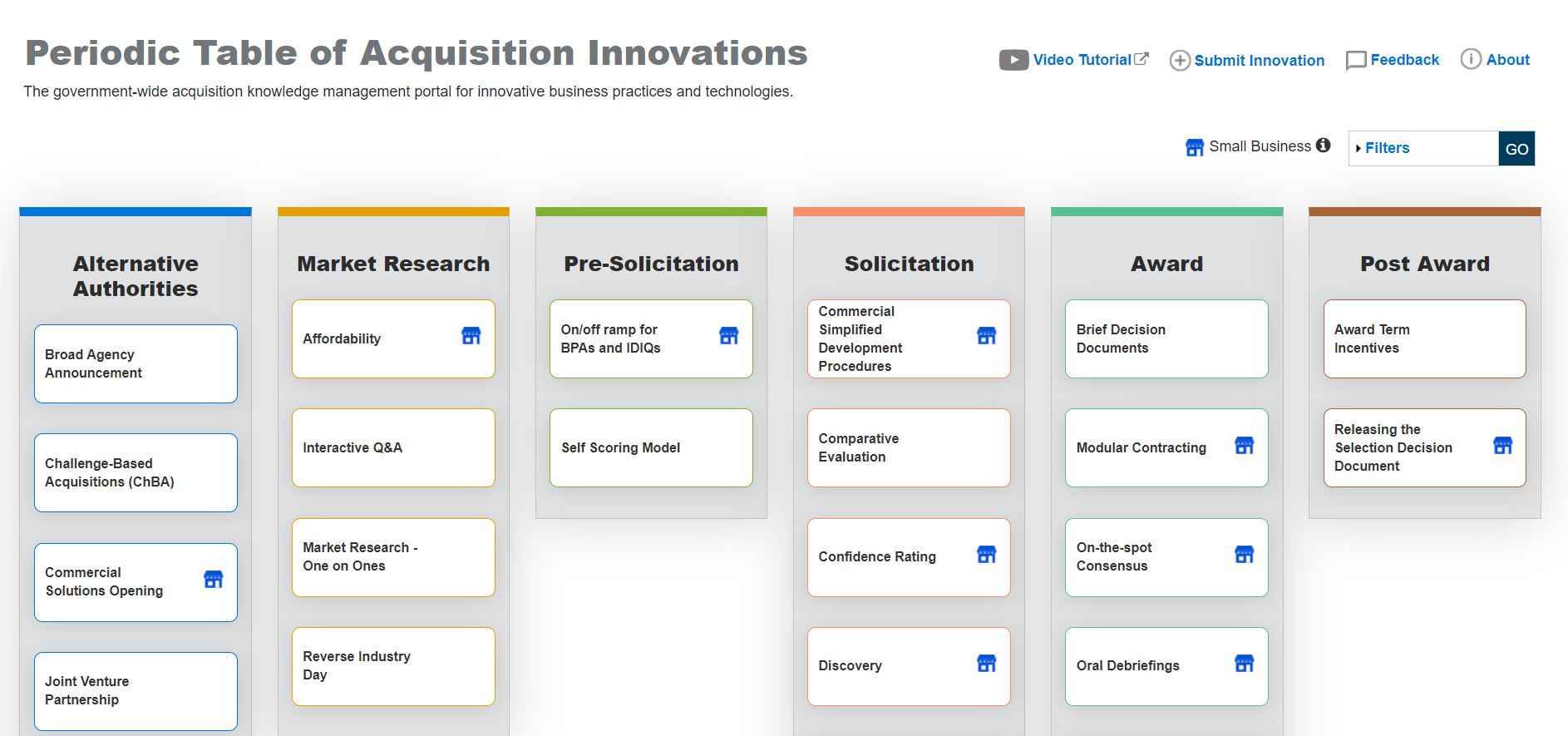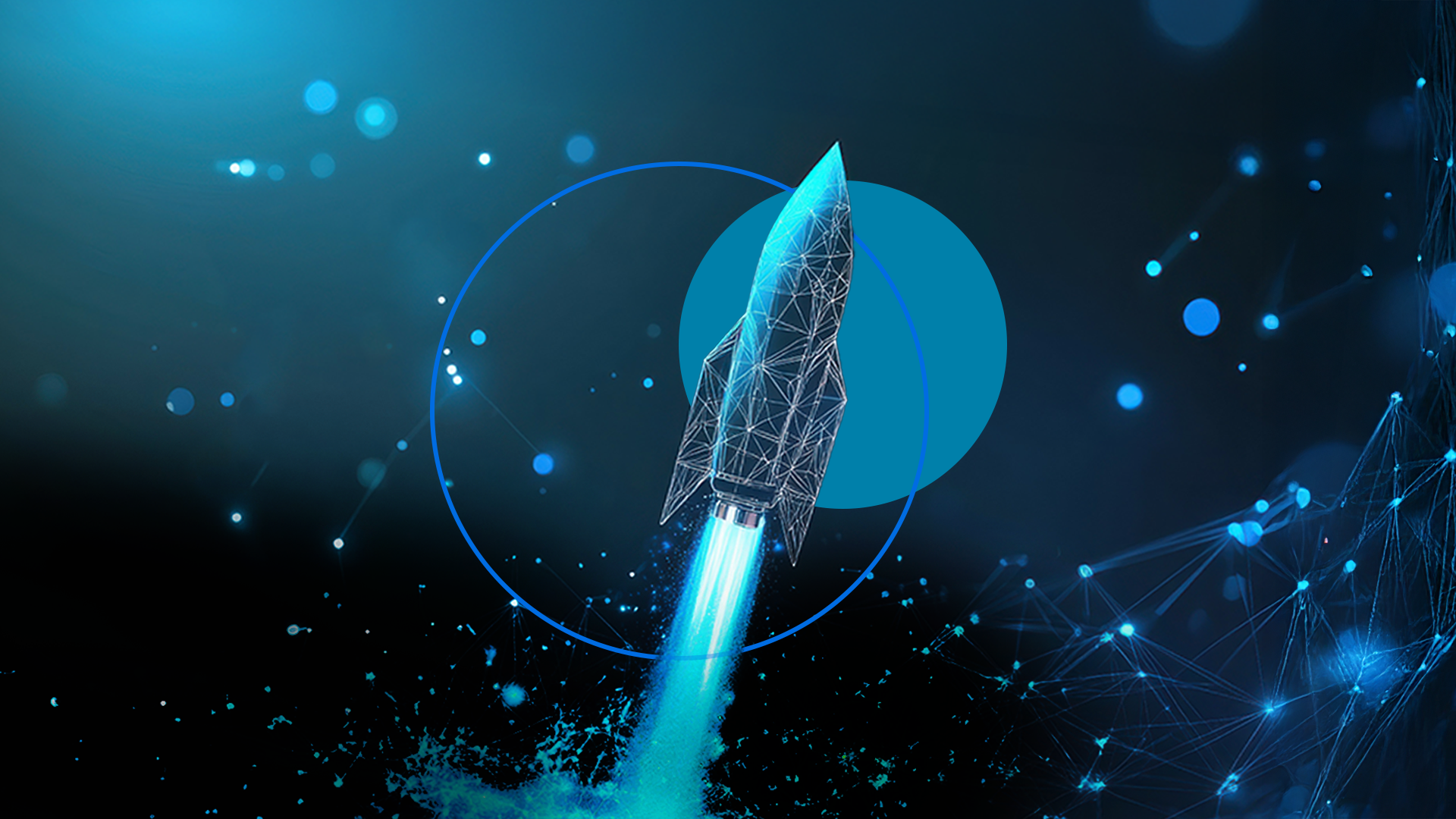By Gissa Sateri
The federal government purchases roughly $3 out of every $10 worth of goods produced and services provided in the United States. This adds up to around $6.82 trillion in annual purchases.(1) However, the process to acquire these goods and services is complex, time-consuming, and expensive, which can hinder the government’s success. The need to identify and document requirements, industry collaboration (e.g., industry days, requests for information, requests for proposals), and contract award protests cause some government procurements to take 18-24 months or longer. Occasionally, a billion-dollar procurement that takes two years and $1 million to administer is canceled, and the process must start over again. Uneconomical, inefficient, and ineffective acquisition activities undermine the public’s confidence in government and waste taxpayer dollars.
A significant side effect of the lengthy acquisition process is the U.S. government’s inability to modernize and innovate information technology systems at the pace of industry, an enormous problem with which the government has long grappled.(2) The U.S. government has set a clear mandate to its acquisition officers and teams: To continue to innovate, we must buy at state-of-the-art speeds. As a result, agencies like the Department of Homeland Security, the Department of Treasury, and the Department of Veterans Affairs have been on the hunt for “frictionless” acquisition techniques — methods that make it faster and less costly to acquire products and services.
government has long grappled.(2) The U.S. government has set a clear mandate to its acquisition officers and teams: To continue to innovate, we must buy at state-of-the-art speeds. As a result, agencies like the Department of Homeland Security, the Department of Treasury, and the Department of Veterans Affairs have been on the hunt for “frictionless” acquisition techniques — methods that make it faster and less costly to acquire products and services.
An effective and popular frictionless tool used to cut time and expenses related to IT acquisitions that is gaining momentum is the Periodic Table of Acquisition Innovation (PTAI). The PTAI, managed by the Federal Acquisition Institute, provides contracting departments a better understanding of “the art of the possible” in helping them reduce friction when procuring technology solutions. In this blog post, we’ll explain what PTAI is, why it’s important and how to use it. We also provide an example of its use at the IRS and, lastly, the cultural mindset needed to gain greater adoption and expansion of the PTAI.
What is the PTAI?
The PTAI is a collaborative government-industry initiative developed under the ACT-IAC Institute for Innovation to collect and share innovative practices used by government acquisition professionals to facilitate frictionless acquisition. The PTAI is a web-based tool designed to showcase different approaches to acquisitions that have proved effective across government. The tool aims to provide innovative examples for contracting officers and other stakeholders to follow in the acquisition process, along with easy techniques they can use in their own organizations.
REI System’s General Services Administration Account Director and recent Fed100 award winner, Gissa Sateri, served as the industry leader for one of the projects under the ACT-IAC’s Office of Federal Procurement Policy Acquisition Innovation project. “The Periodic Table of Acquisition Innovation started as a volunteer-led passion project with ACT-IAC,” she says, “and grew to be an easily accessible, online knowledge repository of innovative acquisition samples from across the government that assists agencies in meeting Office of Federal Procurement Policy mandate of reducing time, complexity and cost associated with the traditional federal procurement practices.”
Why Is the PTAI Important?
The PTAI is important because it provides the government an easily accessible repository of innovative acquisition examples and artifacts from across the government. The table follows the acquisition life cycle, with techniques and sample documents from each phase of the life cycle, providing benefits of use, and templates for agencies to easily adapt to fit their requirements.
The PTAI is meant to be flexible to fit the needs of most agencies. It is template-based, so if something doesn’t work, it can be tweaked and molded to fit any requirement. For example, if an agency would like to experiment with doing market research differently, the agency can use the table to figure out what new processes to try, see what value can be extracted from those processes, and explore examples of how other agencies have used those market research practices.
The PTAI was also created to align with the Federal Acquisition Regulation. The FAI encourages agencies to pilot one or two PTAI practices to realize firsthand its value and benefits and begin building agency-wide support for its adoption.
Agencies that have used the PTAI have demonstrated the following results:
- Accelerated time to award
- Reduced delivery time to market
- Improved customer satisfaction
- Cost savings
- Reduced barriers to entry
- Opportunities for more innovation
- A more successful relationship with industry overall
How to Use the PTAI
Visiting the PTAI, you’ll see an Agile Kanban-style board interface with columns showing the various stages of a typical procurement process — from exploring alternative procurement authorities to post-award activities. Each of these columns has a number of cards featuring some aspect of innovative acquisition. Each card contains a summary of the problems that the approaches aim to solve, and the benefits achieved through their use. Also within each card are specific examples of techniques and templates that can be used.

The goal is for government buyers and their industry counterparts to use the table to discover ways that could help them acquire the products and services they need faster and cheaper than with traditional approaches. It’s also a living, crowdsourced tool. Members of the community are openly invited to add their experiences, innovations, and ideas, making it even more powerful and comprehensive for future users.
The table has been featured during several ACT-IAC conferences, webinars, and events. One recent webinar was “Small Business Alliance Presents: Periodic Table of Acquisition Innovation and Frictionless Acquisitions.” Various agencies are adopting innovative practices from the PTAI and also contributing their own practices.
An Example of Using Approaches from the PTAI
 The Pilot Internal Revenue Service (IRS) program is one example of the innovative techniques featured on the PTAI. Within the Pilot IRS program, the IRS uses a combination of FAR Part 12 and Part 13 provisions to speed time to acquire to just 35 days — avoiding the use of lengthy and often prohibitive language in FAR 15. Pilot IRS also removes price as a variable in acquisitions by setting a clear not-to-exceed ceiling for contracts, tied to its phase and amount of time.
The Pilot Internal Revenue Service (IRS) program is one example of the innovative techniques featured on the PTAI. Within the Pilot IRS program, the IRS uses a combination of FAR Part 12 and Part 13 provisions to speed time to acquire to just 35 days — avoiding the use of lengthy and often prohibitive language in FAR 15. Pilot IRS also removes price as a variable in acquisitions by setting a clear not-to-exceed ceiling for contracts, tied to its phase and amount of time.
The Pilot IRS evaluation process is centered on a reverse industry day and a short Request for Proposal (about six pages) that requests five-page technical proposals and subsequent oral presentations. The reverse industry day allows contracting officers, technical representatives and potential vendors to engage in rapid-fire questions and answers, creating a space for a fuller understanding of the requirement and potential industry solutions. Then, the short technical proposal and oral presentation allow for dynamic conversations through which contracting officers can better understand how the proposed solutions meet their needs, without spending time evaluating lengthy technical proposals. With these processes, the IRS has successfully procured services like automated reporting tools.
The Culture Shift Needed to Fully Exploit the Value of the PTAI
The PTAI is a powerful tool with the potential to help speed up IT acquisitions and make it easier for federal agencies to find innovative solutions for their business requirements — today and in the future. However, the PTAI is beholden to its users. It’s a shared resource and needs constant updating from acquisition teams across the government. It’s a living knowledge portal that needs care and feeding to continue growing.
If you support acquisition reform, be the change you want to see in the community. Start using the PTAI, begin adding your experience and knowledge to the table, and encourage your peers to do so as well. One of the hardest challenges of acquisition reform is the culture component. Participate and be part of the solution to help government operate more effectively. Below are resources to get you started on your journey.
ADDITIONAL RESOURCES:
- FAI Periodic Table of Acquisition Innovations Website
- Periodic Table of Acquisition Innovations: An Introductory Tutorial
- Periodic Table of Acquisition Innovations and Frictionless Acquisitions – FREE ACT-IAC Webinar
Want to know more about frictionless innovation or the Periodic Table of Acquisition? Email info@reisystems.com to get connected to the PTAI community.
Citations
(1) https://datalab.usaspending.gov/americas-finance-guide/spending/
(2) https://www.govinfo.gov/content/pkg/GAOREPORTS-T-OCG-00-7/html/GAOREPORTS-T-OCG-00-7.htm




